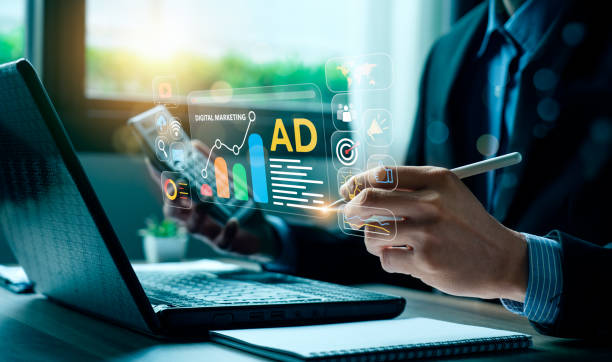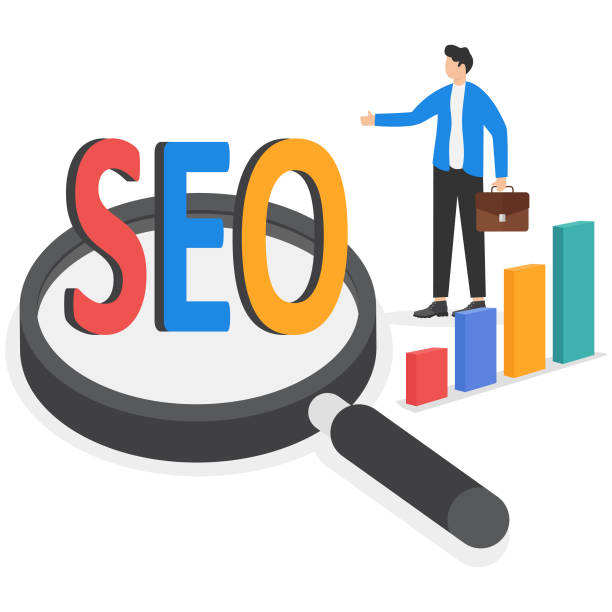What is On-Page SEO and Why is it Important?

On-Page SEO is a set of actions performed within a website to improve its ranking in search results.
These actions include optimizing content, site structure, HTML tags, and other technical factors that help search engines better understand the site’s content.
The importance of #On_Page_SEO lies in the fact that without a strong foundation in on-page SEO, external efforts like link-building alone cannot significantly improve a site’s ranking.
In fact, on-page SEO is like the skeleton of a building, and off-page SEO is like its facade.
No matter how beautiful the facade, if the skeleton is weak, the building will not be stable.
Optimizing a website internally not only improves its ranking in search engines but also enhances user experience, which is itself a crucial factor in increasing traffic and conversion rates.
By correctly understanding on-page SEO and implementing appropriate techniques, you can turn your website into a valuable resource for both users and search engines.
Did you know that your company’s website is the first point of contact for 75% of potential customers?
Your website is the face of your brand. With **Rasawww**’s corporate website design services, create an online presence that earns customer trust.
✅ Create a professional and lasting image for your brand
✅ Attract target customers and increase online credibility
⚡ Get free consultation from **Rasawww** experts!
Keyword Research: The First Step in On-Page SEO

Keyword research is the first and most crucial step in on-page SEO strategy.
The goal of this stage is to identify the words that users employ to search for products, services, or information related to your business.
These keywords should be relevant, high-volume, and have suitable competition.
Various tools are available for keyword research, including Google Keyword Planner, Ahrefs, SEMrush, and Moz Keyword Explorer.
After identifying keywords, you should use them in your site’s content, titles, meta descriptions, URLs, and other important sections.
However, note that excessive use of keywords or Keyword Stuffing not only doesn’t help your site’s SEO but may also lead to penalties from Google.
The best approach is the natural and relevant use of keywords within the content.
For instance, if your main keyword is “On-Page SEO tutorial”, you can use it in the page title, subheadings, and body text.
Content Optimization: The Heart of On-Page SEO

Content is king! This famous phrase perfectly illustrates the importance of content in SEO.
High-quality, engaging, informative, and user-relevant content plays a key role in attracting traffic, increasing conversion rates, and improving a site’s ranking in search results.
Site content should be optimized for both users and search engines.
To this end, you should use keywords naturally in the text, create an appropriate content structure (using headings, subheadings, paragraphs, and lists), use relevant images and videos, and regularly update your content.
Also, pay attention to content length.
Longer content usually ranks better in search results, but more important than content length is its quality.
Long and low-quality content not only doesn’t help your site’s SEO but may also tire users and decrease engagement.
Finally, site content must be unique.
Copying others’ content is one of the biggest SEO mistakes that can lead to penalties from Google.
The goal of on-page SEO is to create valuable and unique content.
| Content Optimization Factor | Description |
|---|---|
| Keywords | Natural and relevant use of keywords in titles, text, and images |
| Content Structure | Using headings, subheadings, paragraphs, and lists to organize content |
| Images and Videos | Using relevant images and videos and optimizing them for SEO |
| Content Updates | Regularly updating site content to maintain freshness and relevance |
Optimizing Titles and Meta Descriptions

Titles and meta descriptions are the first things users see in search results.
These elements play a crucial role in attracting users to your site.
The page title should be engaging, informative, and include the main keyword.
The title length should be less than 60 characters to be fully displayed in search results.
Meta descriptions should be a summary of the page’s content and encourage users to click.
Meta description length should be between 150 and 160 characters.
Titles and meta descriptions should be unique for each page of the site.
Using duplicate titles and meta descriptions can lead to a decrease in site ranking in search results.
Also, you should use keywords naturally in titles and meta descriptions.
Excessive use of keywords or Keyword Stuffing not only doesn’t help your site’s SEO but may also result in penalties from Google.
Strong on-page SEO means providing the best user experience.
Are you worried your company’s old website is scaring away new customers? Rasawww solves this problem with modern and efficient corporate website design.
✅ Increases your brand’s credibility.
✅ Helps attract targeted customers.
⚡ Contact Rasawww for a free consultation!
URL Structure and Internal Links

URL structure and internal links play a significant role in improving site SEO and user experience.
URLs should be short, descriptive, and include the main keyword.
Avoid using long and complex URLs.
Also, you should use English words in URLs.
Using Persian words in URLs can cause issues with displaying and sharing addresses.
Internal links are links that connect different pages of a site to each other.
Internal links help search engines better understand the site structure and identify more important pages.
Also, internal links help users easily navigate the site and find the information they need.
Using appropriate anchor text for internal links can help improve the site’s ranking in search results.
Anchor text is the text used to link to another page.
Anchor text should be relevant to the content of the target page and include the main keyword.
For example, if you want to link to the “On-Page SEO tutorial” page, you can use the anchor text “On-Page SEO tutorial“.
Image Optimization

Images play a crucial role in attracting users to a site and improving user experience.
However, large and unoptimized images can decrease site loading speed and negatively impact SEO.
To optimize images, you should use the appropriate format (such as JPEG or PNG), suitable size (less than 100 KB), and a descriptive file name.
Also, you should use alt tags to describe images.
The alt tag is text displayed to users if the image cannot be shown.
The alt tag should be descriptive and include the main keyword.
Image optimization not only improves site loading speed but also helps search engines better understand images and display them in image search results.
On-page SEO requires attention to detail.
Site Loading Speed: A Critical Factor in SEO

Site loading speed is one of the most important ranking factors in Google.
Users encountering a slow-loading site usually leave it and go to another site.
This leads to an increased Bounce Rate and decreased Time on Site, both of which are negative SEO factors.
To improve site loading speed, you can use various techniques, including: image optimization, using a CDN (Content Delivery Network), enabling Gzip compression, reducing the number of HTTP requests, and using caching.
Also, you should use a high-quality hosting service that offers high speed and stability.
Regularly testing site speed using tools like Google PageSpeed Insights and GTmetrix can help identify and resolve site speed issues.
Good on-page SEO means high speed and optimal user experience.
| Speed Optimization Technique | Description |
|---|---|
| Image Optimization | Reducing image size and using the appropriate format |
| Using CDN | Distributing site content across various servers to increase speed |
| Gzip Compression | Reducing file sizes for faster transfer |
| Caching | Storing data for faster access |
Mobile-Friendly Optimization

Given the increasing use of mobile devices for internet searches, optimizing a site for mobile devices is of particular importance.
Since 2015, Google has introduced Mobile-First Indexing, meaning the mobile version of a site is the basis for ranking in search results.
To ensure a site is Mobile-Friendly, you should use Responsive Design, which allows the site to automatically adapt to the screen size of various devices.
Also, you should use readable fonts and large buttons so mobile users can easily navigate the site.
Testing a site’s Mobile-Friendly status using the Google Mobile-Friendly Test tool can help identify and resolve Mobile-Friendly issues.
On-page SEO and mobile-friendliness are two sides of the same coin.
Research shows that 80% of customers trust companies with professional websites more. Does your current website inspire this trust?
With Rasawww’s corporate website design services, permanently solve the problem of customer distrust and a weak online image!
✅ Create a professional image and increase customer trust
✅ Attract more sales leads and grow your business
⚡ Get free consultation
The Importance of Schema Markup in On-Page SEO

Schema Markup is code added to website pages that helps search engines better understand the content of those pages.
Schema Markup can provide information such as content type (article, product, event, etc.), author, publication date, and other relevant details to search engines.
Using Schema Markup can lead to better display of the site in search results and increase the Click-Through Rate (CTR).
Schema Markup can be added to site pages manually or using SEO plugins.
Testing Schema Markup using the Google Rich Results Test tool can help ensure the correctness of the Schema Markup code and its proper display in search results.
Enhance your on-page SEO by using Schema Markup.
Monitoring and Continuous Improvement of On-Page SEO

SEO is an ongoing process and requires continuous monitoring and improvement.
You should regularly check site performance in search results, analyze site traffic, and measure conversion rates.
Tools such as Google Analytics and Google Search Console can assist you in this regard.
Using these tools, you can identify keywords that drive the most traffic to your site, pages with the most visits, and any potential SEO issues.
Based on this information, you can improve your on-page SEO strategy and increase your site’s ranking in search results.
Remember that on-page SEO is a dynamic process and must adapt to changes in Google’s algorithms and user needs.
Frequently Asked Questions
| Question | Answer |
|---|---|
| What is On-Page SEO? | On-page SEO involves optimizing elements that are directly under your control and within your website. Its goal is to help search engines better understand the page content and improve its ranking. |
| Why is On-Page SEO important? | On-page SEO provides clear signals to search engines about the page’s content, improves user experience, and increases the chance of attracting organic traffic. |
| What are the most important On-Page SEO factors? | Keywords, Title Tag, Meta Description, URL structure, quality content, image optimization, and internal links are among the most important factors. |
| What is the role of the Title Tag in On-Page SEO? | The title tag is one of the most important signals for search engines and users, specifying the main topic of the page. It should include the main keyword and be engaging. |
| How important is the Meta Description? | Meta descriptions do not directly affect rankings, but by encouraging users to click, they can improve the Click-Through Rate (CTR). |
| How to optimize images for On-Page SEO? | By using a descriptive file name, appropriate Alt Text containing keywords, compression to reduce size, and correct dimensions. |
| What is the effect of Internal Links on SEO? | Internal links help search engines discover and index site pages, distribute authority (PageRank) throughout the site, and improve user navigation. |
| Is page loading speed an On-Page SEO factor? | Yes, page loading speed is a critical factor in on-page SEO and user experience. Slower pages can lead to higher bounce rates and lower rankings. |
| What characteristics does quality content have for On-Page SEO? | Quality content should be comprehensive, unique, relevant, trustworthy, readable, and fully answer users’ needs and questions. |
| How can keywords be used in content? | Keywords should be used naturally in titles, subheadings, the first paragraph, body text, and image alt text. Avoid Keyword Stuffing. |
And other advertising services by Rasawww Advertising Agency
- Smart Website Development: An innovative service to improve SEO ranking through attractive UI design.
- Smart Data Analysis: A specialized service for increasing website traffic growth based on marketing automation.
- Smart Content Strategy: A professional solution to increase click-through rates with a focus on SEO-driven content strategy.
- Smart Direct Marketing: Professional optimization to increase sales using custom programming.
- Smart SEO: An innovative platform for improving online growth with an SEO-driven content strategy.
And hundreds of other services in the field of internet advertising, advertising consultation, and organizational solutions
Internet Advertising | Advertising Strategy | Advertorial
Sources
Comprehensive Guide to On-Page SEO from Zero to Hundred
What is On-Page SEO?
Website On-Page SEO Tutorial
On-Page SEO Factors
? With Rasawww Afarin, elevate your business to digital heights and establish a powerful online presence tailored to today’s needs with our specialized services, including corporate website design. To learn more about our comprehensive digital marketing solutions, visit Rasawww Afarin’s website.
📍 Tehran, Mirdamad Street, next to Bank Markazi, Kazerun Jonoubi Alley, Ramin Alley, No. 6




